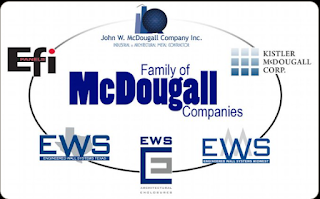Empowering Business Success through Tech Utilization Design:
Revolutionizing Office Automation and Employee Engagement
In today's fast-paced business environment, optimizing office automation and fostering employee motivation are essential for staying competitive. Hiring a tech utilization designer can be a game-changer for businesses seeking to streamline operations, implement manufacturing execution systems, and cultivate a workforce driven by collaboration and success. In this post, we will explore the challenges of overstaffing, the drawbacks it presents, and how a tech utilization designer can help businesses overcome these obstacles while maximizing efficiency and employee engagement.
The Pitfalls of Overstaffing: Studies, including research conducted by the Harvard Business Review, indicate that the average company has 12% more employees than necessary. Overstaffing results in significant financial burdens, including excessive salaries, benefits, and overhead costs. Some common reasons for overstaffing include fear of losing business and a desire to project success as an employer. However, these practices can lead to reduced productivity, coordination challenges, increased costs, and limited innovation.
The Role of a Tech Utilization Designer: A tech utilization designer specializes in optimizing automation, streamlining processes, and fostering a culture of collaboration and success. By leveraging their expertise, businesses can benefit in the following ways:
Office Automation: A tech utilization designer can identify redundant tasks that can be automated, thereby improving efficiency, reducing errors, and freeing up employees to focus on more strategic work. They can implement software robots, develop custom solutions, and integrate automation tools to transform the workplace.
Manufacturing Execution Systems (MES): With expertise in MES, a tech utilization designer can streamline production processes, minimize waste, and improve quality control. By integrating automation technologies and data-driven insights, they can enhance productivity, traceability, and decision-making.
Employee Engagement: Beyond automation, a tech utilization designer can foster an environment where employees are motivated to excel. By implementing systems that encourage collaboration, knowledge sharing, and performance recognition, they can nurture a culture of success and teamwork, enhancing overall productivity and job satisfaction.
- Assessing the Workforce: As a tech utilization designer, one of the initial steps is to assess the current workforce to determine if overstaffing is present. This assessment can involve:
Financial Analysis: Analyzing financial statements to evaluate the ratio of revenue to employee costs. If salaries and benefits exceed revenue, it may indicate overstaffing.
Employee Feedback: Engaging with employees to understand their workload and productivity levels. Their input can provide valuable insights into potential staffing imbalances.
Productivity Evaluation: Assessing the efficiency and output of current operations to determine if the workforce is fully utilized. Identifying bottlenecks, inefficiencies, or underutilized resources can indicate areas for improvement.
- Strategies for Right-Sizing the Workforce: Once overstaffing is identified, a tech utilization designer can assist in implementing strategies to optimize the workforce. Some effective approaches include:
Voluntary Buyouts: Offering employees the opportunity to voluntarily leave the company in exchange for attractive incentives can be a cost-effective method of reducing the workforce while minimizing negative repercussions.
Remote Work Opportunities: Encouraging remote work options can help optimize office space utilization and reduce overhead costs. Additionally, remote work can boost employee morale, job satisfaction, and work-life balance.
Process Optimization: Collaborating with cross-functional teams, a tech utilization designer can identify and streamline inefficient processes, enabling the organization to operate more effectively with a leaner workforce.
Conclusion: In the face of overstaffing challenges, businesses can harness the expertise of a tech utilization designer to navigate the complexities of office automation, implement manufacturing execution systems, and foster a workforce driven by collaboration and success. By eliminating redundant tasks, optimizing processes, and cultivating employee engagement, businesses can reduce costs, improve productivity, and achieve sustainable growth. Embracing the transformative power of a tech utilization designer will propel businesses towards increased efficiency, innovation, and a workforce focused on winning rather than competing for status and raises.



Comments
Post a Comment